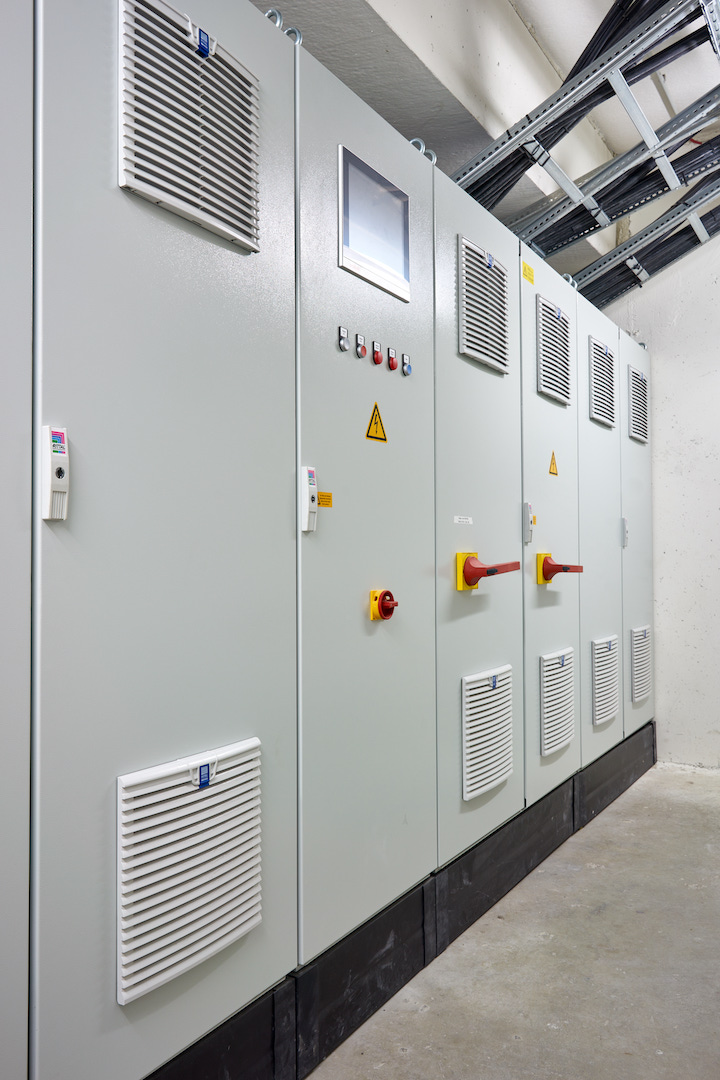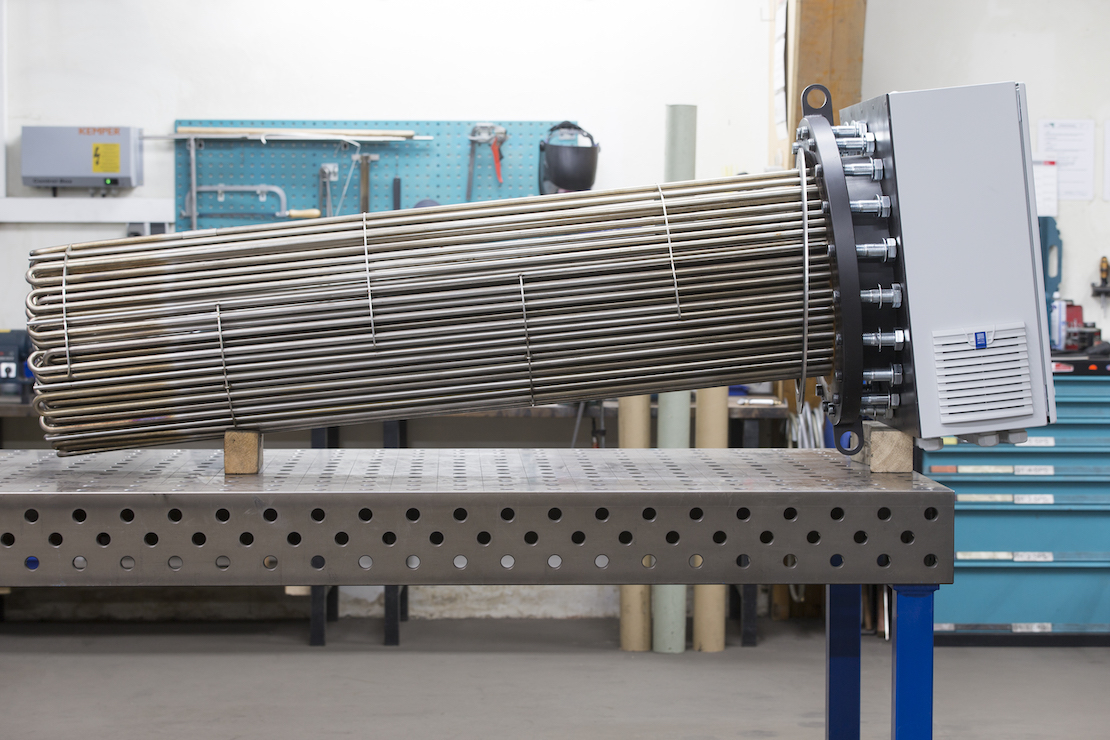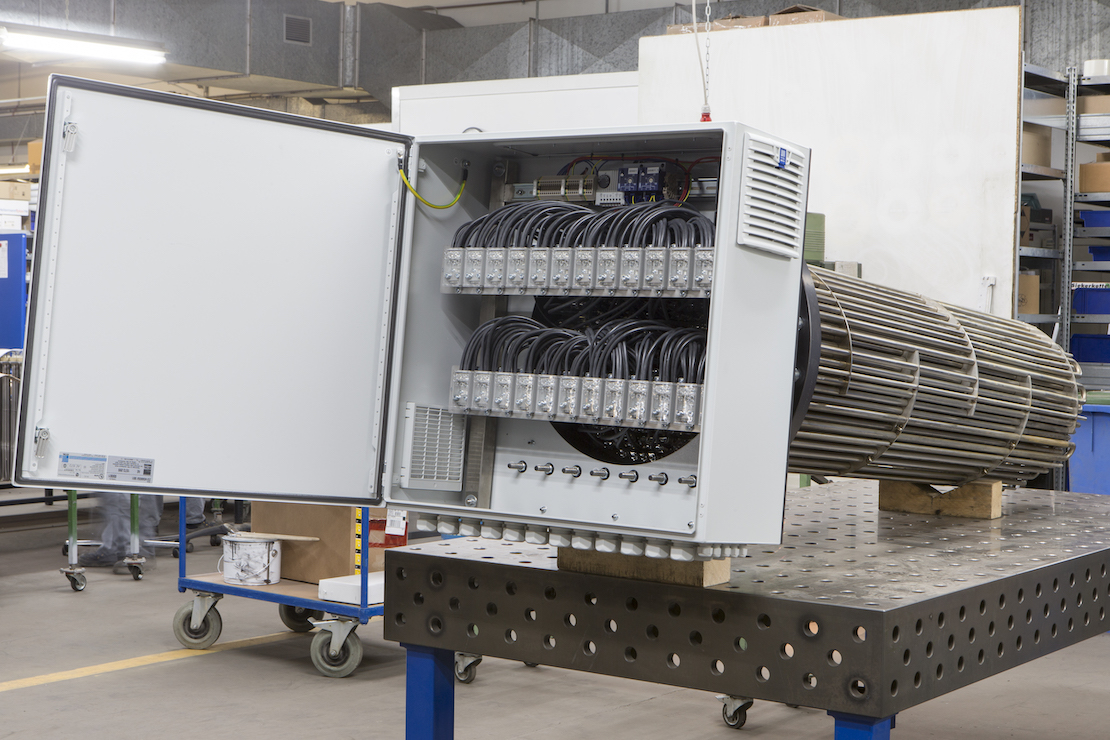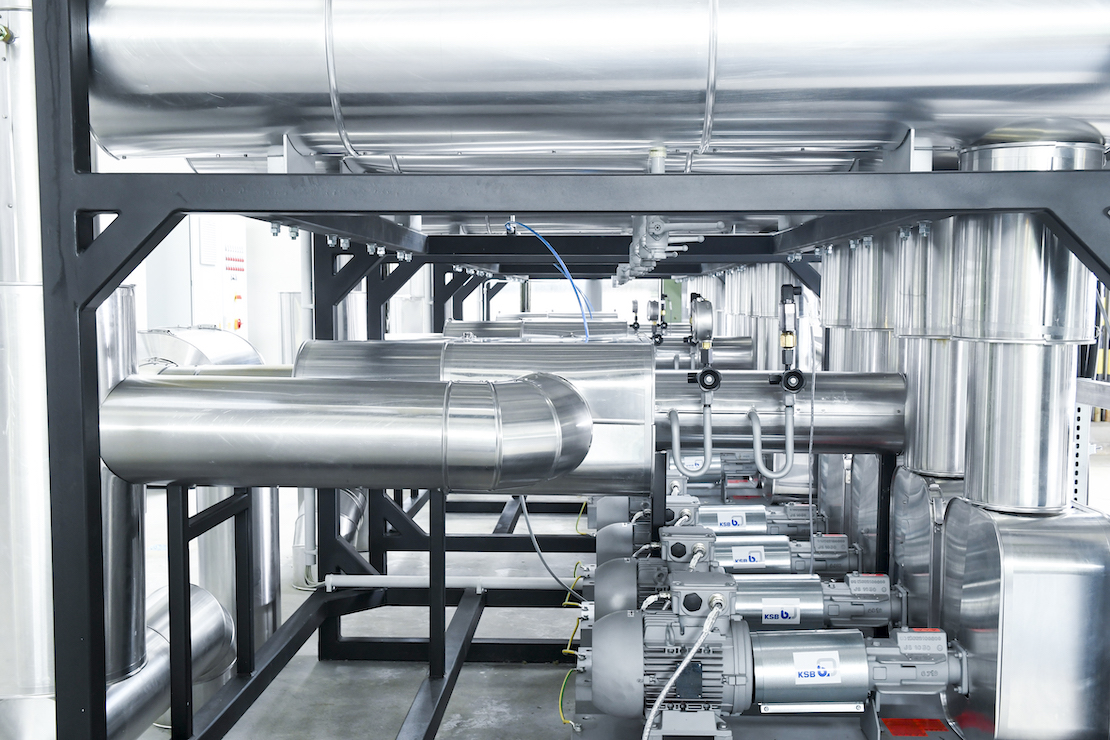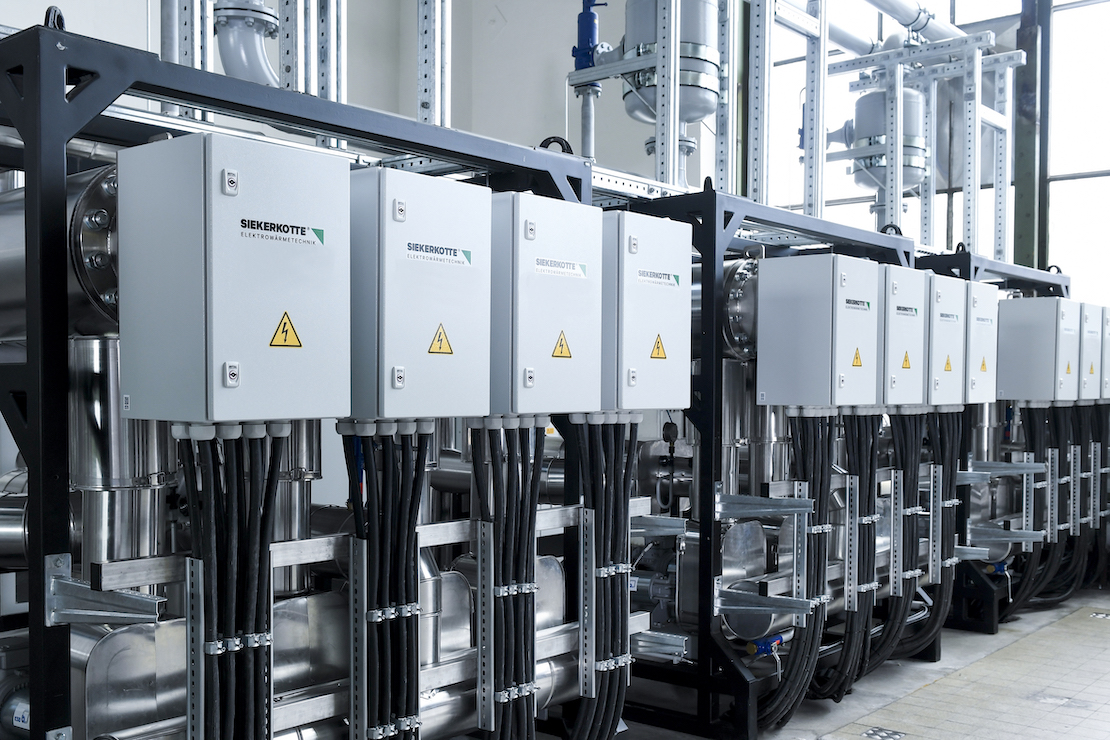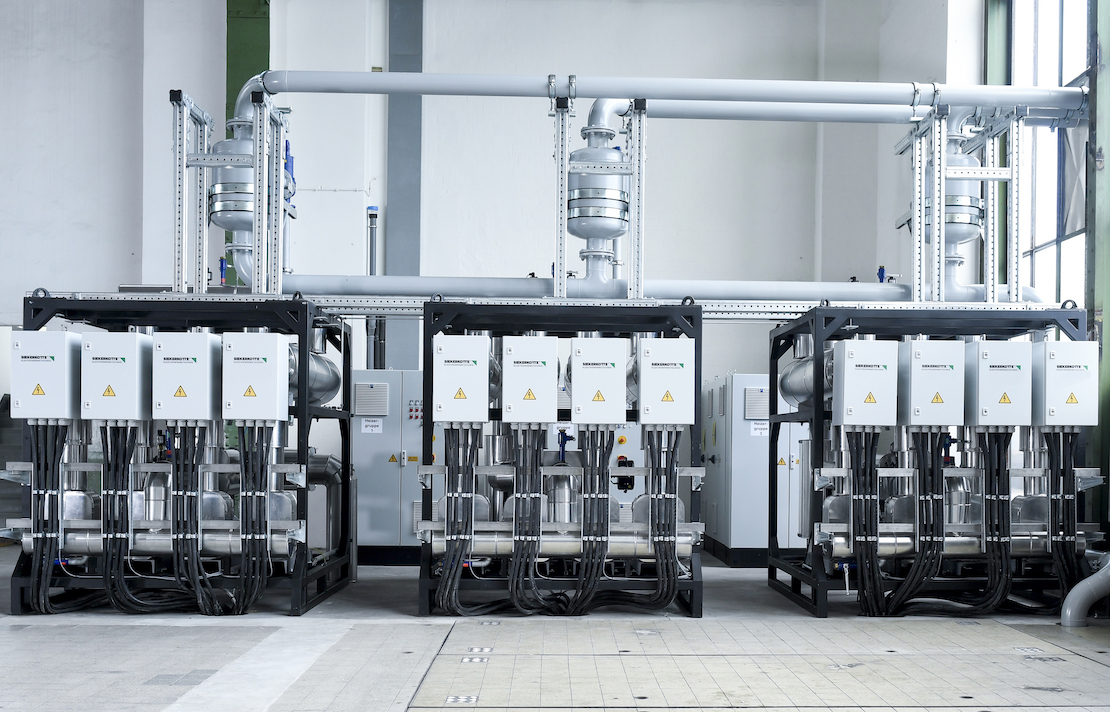Complex requirements solved innovatively
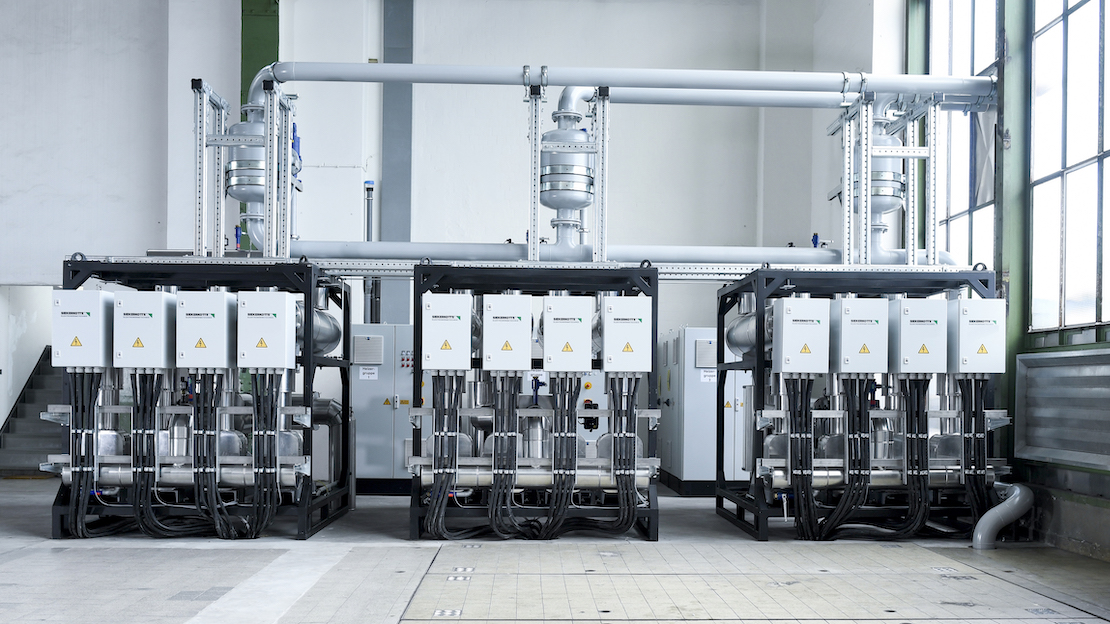
Complex requirements solved innovatively
Power-to-heat / hybrid plants
What are power-to-heat/hybrid plant solutions?
To advance the energy transition and the decarbonization of our society, we need more and more multivalent energy sources, as well as cooperative heating solutions in the area of heat supply. Achieving set energy targets shall depend to a large extent on the success of the heat turnaround, heating being one of the largest energy consumers in Germany.
The German Energy Saving Ordinance also means that property developers, homeowners who want to renovate, and energy suppliers all have the same goal: Combining existing heating and energy concepts with new ideas and regeneratively generated energy. Local heating networks that supply several residential units can play an important role in reducing the investment costs of each participant and bringing them down to a manageable level. As the proportion of electricity produced from renewable energy continues to rise, a proven and well-known process is once again gaining in importance: Power-to-heat!
This method uses the principle that metallic conductors through which current flows generate heat. Since electricity is pure energy and hardly suffers any losses during transport, the principle was long considered outdated, even though the efficiency of converting electrical energy into thermal energy is almost 100%. However, if electricity will no longer be generated from coal, nuclear energy and other fossil fuels, this thermal energy generation now makes sense again.
Siekerkotte has focused on the topic of thermal energy generation from electricity since its founding, building countless heaters ranging from a few kilowatts to several megawatts, supplying them worldwide and thus creating heating solutions for our customers. Electric heaters are one of the most popular devices to connect the sectors of electricity and heat. Since electric heaters simultaneously help to stabilize electrical grids and increase the economic efficiency of regenerative energy producers, using them makes even more sense.
The study “Potenziale für Strom im Wärmemarkt bis 2050” (Potentials for Electricity in the Heating Market up to 2050), published by the VDE, attests of the high technical potential of electric heating systems due to their comparatively low investment costs. Modeling by Fraunhofer IWES (Institute for Wind Energy Systems) shows that power-to-heat plants can make a significant contribution to decarbonization. It is now possible to put the heat generated to good use, for example by incorporating it into a local heating network.
The economic viability of power-to-heat systems depends directly on the cost of electricity used; largely on its ancillary costs. CO2 emission certificates and regulatory framework conditions also play a role in the investment consideration.
If you are planning or wish to design a power-to-heat plant, we are the contact you are looking for.
We will assist you in:
- developing the concept and planning your power-to-heat plant
- implementing the plant
- commissioning the plant on site
Take advantage of our 30 years of experience and let us tackle the heat turnaround together!





